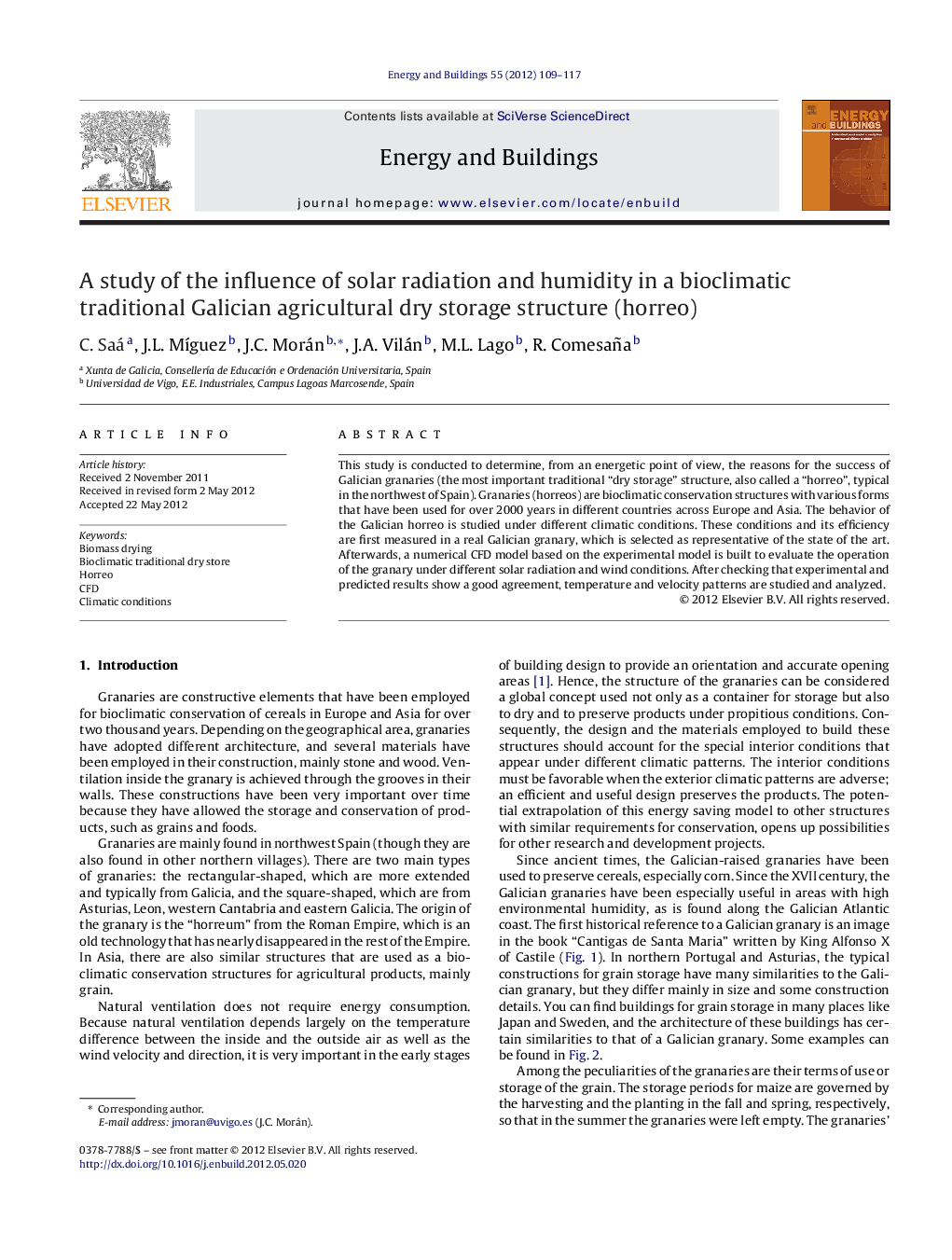| Article ID | Journal | Published Year | Pages | File Type |
|---|---|---|---|---|
| 263819 | Energy and Buildings | 2012 | 9 Pages |
This study is conducted to determine, from an energetic point of view, the reasons for the success of Galician granaries (the most important traditional “dry storage” structure, also called a “horreo”, typical in the northwest of Spain). Granaries (horreos) are bioclimatic conservation structures with various forms that have been used for over 2000 years in different countries across Europe and Asia. The behavior of the Galician horreo is studied under different climatic conditions. These conditions and its efficiency are first measured in a real Galician granary, which is selected as representative of the state of the art. Afterwards, a numerical CFD model based on the experimental model is built to evaluate the operation of the granary under different solar radiation and wind conditions. After checking that experimental and predicted results show a good agreement, temperature and velocity patterns are studied and analyzed.
► This study determine the reasons for the success of Galician granaries. ► Analyzing external conditions helps to separate the effect of the climate on the granary. ► Two cases are studied: wet windy no sun (AC1) and dry sunny no wind (AC2). ► Under the AC1 ventilation efficiencies are close to industrial architecture design. ► Floor grooving under the AC2 conditions confirm the benefit of the slotted floor.
